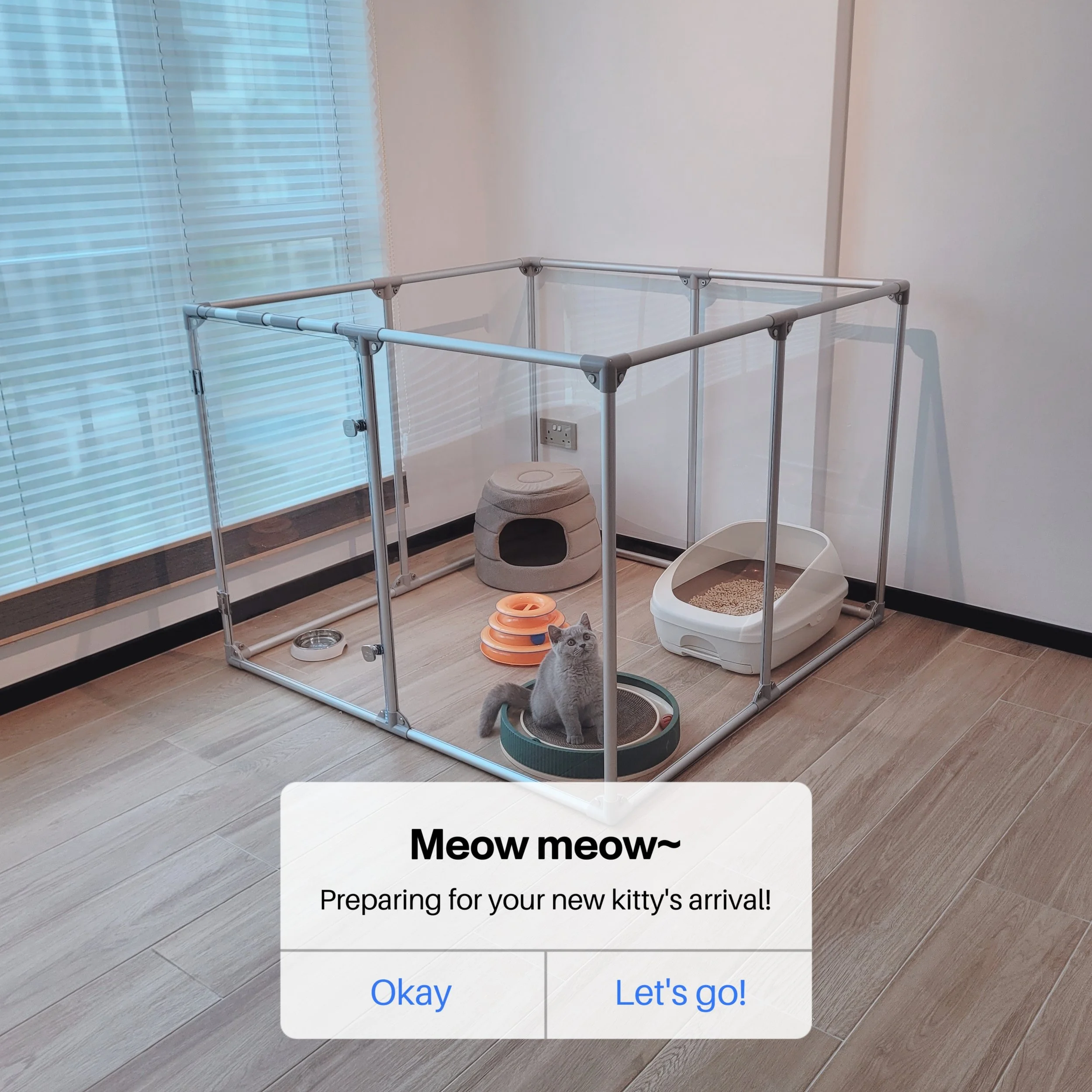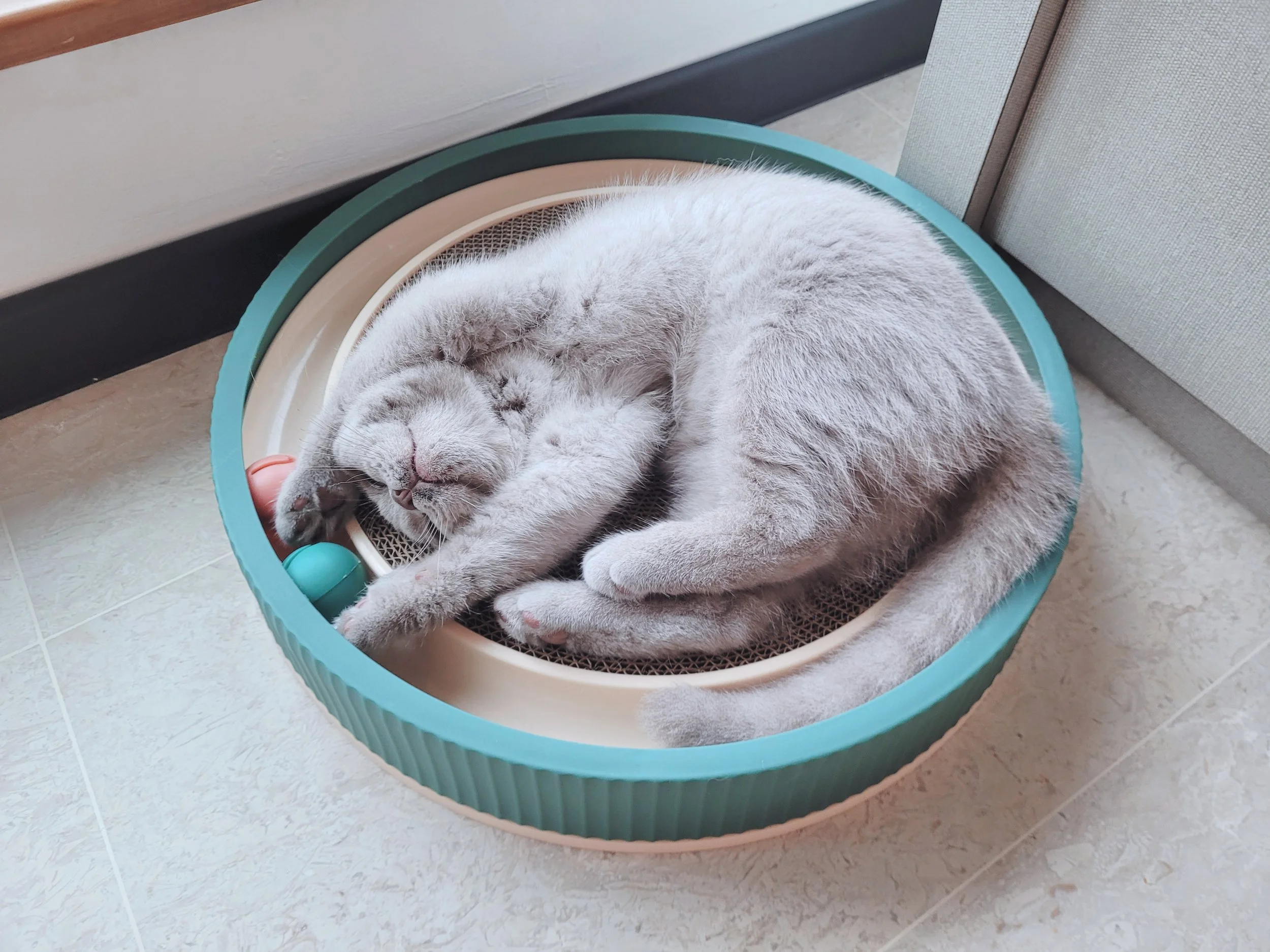Preparing for your new kitten’s arrival
So you’ve decided to get a new kitten, but have you prepared for their arrival?
Welcoming a new kitten into the family can be exciting and overwhelming at the same time. We’ve put together this list to help you through the process and check off the stuff you’ve already done!
There are a few things you’ll need to do before your kitten comes home. This small list is a great place to start your preparations off and help your kitten grow up well.
Preparing your family and home
Cats are curious and playful by nature. They’ll explore anywhere they can fit into and get their paws on, so cat-proofing your house will help avoid any accidents or injuries. Here are some things to take note of:
Secure all windows and other openings
It is absolutely necessary to secure all possible openings in your house, especially windows for high-rise apartments. Cats enjoy looking outside from high places, so install mesh screens, nettings or grills to your windows and openings that lead to the outside (even if you live on the ground floor). You might also want to limit access to sills and ledges.
Small openings, such as those behind household appliances, should also be sealed up to prevent your cat from squirming in and getting stuck.
Secure cabinets and drawers
Cats have a way of finding their way into spaces you don’t expect them to, such as cabinets or drawers. If those spaces contain products harmful to cats, make sure these spaces are always tightly secured, or locked if possible.
Make a habit of looking into spaces before closing them
You may find your cat lounging inside your washing machine, dryer, laundry baskets, closets or drawers. They may not make a sound even when they’re closed in, so start looking into such places before closing them!
Clean up wires and dangling items
Wires, cables and strings look like toys to cats. Use wire protectors or tuck them away out of their reach. Loose items like strings or rubber bands should also be stored away safely.
Remove poisonous plants
Some common houseplants may be toxic to cats. If you already have some at home, look them up online to see if they’re cat-friendly and get rid of the ones that are harmful.
Choose a veterinarian
Before you bring your kitten home, look for a vet near you where you can take them for regular check-ups. You may also want to find a 24-hour animal hospital you can easily access in times of emergencies.
Vaccinations
Aside from the mandatory vaccines your kitten will receive in their early stages, there may be a few others you can consider. Talk with your vet to see which ones fit your cat’s lifestyle and needs.
Flea & tick prevention
Parasites can still enter homes through other pets or through our clothes, which can then be transmitted to your indoor cat. Consider getting your cat on a flea & tick prevention measure.
Pet insurance
Unexpected medical expenses may arise and can add up to large bills over time. Pet insurance can help mitigate some of the costs.
Setting a safe space aside
Choose a space or room that will become your new kitten’s personal, safe zone for their first few days in your home. Make sure they have access to everything they need in their space, and let them acclimatise gradually to their new environment. Some may hide, so it will be good to provide a safe hiding space, or leave the carrier you brought them home with inside their space for them to curl up in.
Living essentials
Kitten food
Growing kittens require a wider array of nutrients to meet their growth needs. Your breeder will have shared their recommendations and suggestions, and some may even provide a few weeks worth of food for you to start things off.
For those who wish to change your kitten’s diet, do so gradually over the course of 7-10 days to avoid upsetting their stomach. Slowly introduce the new food in a small portion with their current food, and slowly change the amount over time. Do not immediately give them the new diet as it can upset their stomach.
If you are still unsure about what’s best for your kitten, you can speak with your vet.
Cat treats
Treats can help with training and encourage bonding. Be mindful not to overfeed as it can lead to weight gain. Single-ingredient treats are also recommended, so it’s easier to track the protein and nutritional content you’re giving your kitten.
Food and water bowls
Having a few sets of bowls is good so you’ll always have clean ones to use while some are in the wash. Stainless steel or food-grade steel bowls are great choices as they’re easy to sanitise and safe to eat and drink from.
Cat litter
Use the same litter as your breeder is using, if possible. Otherwise, an unscented, scoop-able litter is also a good choice.
Litter box
Choose a litter box with low sides your kitten can get in and out of easily, and place it somewhere they can access easily. When your kitten grows bigger, you can change it to another box of your choice. A litter scoop will also be useful for clearing the box daily so your cat always has a clean box.
Cat bed
Your kitten will need a space to rest. They may lounge on your bed or sofa, but it will be good to give them their own bed and encourage them to use it. Find a bed that’s easy to wash, or one that provides them a space to burrow into.
Cat scratchers
Cats will scratch instinctively, so provide them with scratchers so they have something to file their claws with. You can place scratchers around the house to prevent them from scratching your furniture.
Cat toys
Toys are essential for keeping your cat entertained and enriched. Playing with toys can let them practise their innate, hunting behaviours. There are a variety of toys, such as interactive ones, teasers or scent toys. Catnip or silver vine toys are also a good option for energetic, playful kitties.
Towers, trees and perches
Cats love perching up high, so you might find your kitten jumping and climbing onto a higher place. Provide them with their own tree or tower for them to climb on. Some may be multi-levelled, or come with tunnels or built-in scratching posts.
A carrier
Familiarising your kitten with their carrier will make travelling and vet visits a breeze. You can use the carrier you’ve brought your kitten home in a carrier from the breeder, and continue practising with them. Encourage them to explore the carrier, or make a game out of it. Continue creating positive associations with the carrier so they’ll be comfortable with the carrier. You can use the same methods with a new carrier if you wish to change it.
Collar and tag
A collar with an ID tag is essential for your cat’s safety, in the event that they run out of your house. Make sure the collar isn’t too tight or loose when worn. Breakaway collars are also an option!
Cleaning supplies
Cats usually learn how to use the litter box fairly quickly, but accidents can still happen. Use pet-friendly cleaning supplies that do not contain any harsh chemicals. You may also want to keep urine cleaners and odour eliminators on hand. If your kitten isn’t using their litter box, you may want to try changing their litter or visit your vet to rule out any medical issues.
Having the necessary supplies and support system can make this transition period smoother for both your new kitten and you. Now that you’ve settled all the administrative matters, don’t forget to enjoy the moments with your little furball. Let them explore and be silly; build a bond with them as they grow.
Wondering how to introduce your new kitten to your dogs? Read this article to find out more!


